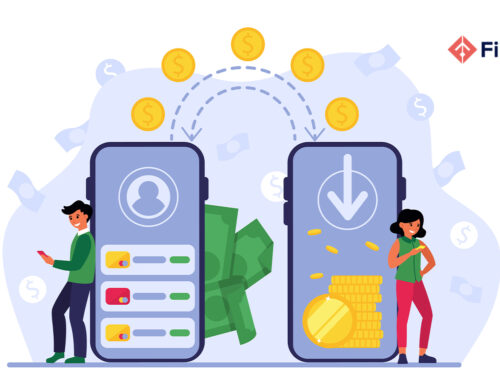Debt majorly refers to the money you borrowed, but liabilities are your financial responsibilities. At times debt can represent liability, but not all debt is a liability. Liability vs Debt is a vital part of any business that wants to become an industry leader or manage its operations successfully.
To get a good reading of a company’s relative financial stability, it is best to compare its current ratio to the average current ratio of similar companies operating in the same industry. You can also compare it to the company’s own current ratio in previous years, to identify whether the company is trending toward a higher or lower ratio. A liability is a debt owed by a company that requires the entity to give up an economic benefit (cash, assets, etc.) to settle past transactions or events. Borrowers must repay the amount they owe, typically with interest, by a specific date specified in the repayment terms for all these different forms.

Contingent liabilities are a special type of debt or obligation that may or may not happen in the future. The most common example of a contingent liability is legal costs related to the outcome of a lawsuit. For example, if the company wins the case and doesn’t need to pay any money, it does not need to cover the debt.
Liabilities Examples
A liability is typically an amount owed by a company to a supplier, bank, lender or other provider of goods, services or loans. Liabilities can be listed under accounts payable, and are credited in the double-entry bookkeeping method of managing accounts. Similar to businesses, individuals or households balance assets against liabilities to determine their net worth.
However, if your liabilities become too great for your income level and you no longer have the assets necessary to pay your debts when they’re due, you might find yourself considering bankruptcy. While this legal process resolves liabilities due to an inability to pay. It also has an adverse effect on your credit score and ability to borrow in the future. There is potential for successor liability in the purchase of a business, which means the buyer could assume the risk for certain liabilities. Asset sales are more complicated than stock sales because the individual assets and liabilities must be purchased and sold. However, we have discovered that this concept usually only applies to larger transactions. An expense is the cost of operations that a company incurs to generate revenue. Unlike assets and liabilities, expenses are related to revenue, and both are listed on a company’s income statement.

In general, anything that takes from you is your liability, while anything that adds to you is an asset.
Difference Between Liability and Debt
As a practical example of understanding a firm’s liabilities, let’s look at a historical example using AT&T’s (T) 2020 balance sheet. On the balance sheet, we separate current/short-term liabilities from long-term/non-current liabilities. A company utilizes liabilities to finance operations and fund significant expansions, making them a vital aspect. For example, in most cases, if a wine supplier sells a case of wine to a restaurant, it does not demand payment when it delivers the goods. Rather, it invoices the restaurant for the purchase to streamline the drop-off and make paying easier for the restaurant.
Company management will attempt to address that question by projecting their current liabilities for the next fiscal quarter or year and the expected cash inflows for the same period. For the Income statement, such salary and wage transactions contribute to the total salary and wage expenses for the accounting period. A company’s total liabilities are the sum of its short and long-term liabilities. In brief, liabilities represent the totality of a company’s outstanding debt. You can locate the information required to calculate a quick ratio on a company’s balance sheet, available in its most recent earnings report. In some cases, this may mean your liability transforms into an asset, like a mortgage balance becoming full home equity.
Asset Turnover Ratio: Definition and Formula
Accounting textbooks or an accounting professional can provide more detailed definitions. When failure is not an option, wise project managers rely on the power of statistical process control to uncover hidden schedule risks, build teamwork, and guarantee on-time delivery. Finish time-critical projects on time with the power of statistical process control tracking. The Excel-based system makes project control charting easy, even for those with little or no background in statistics. A clear, practical, in-depth guide to principle-based case building, forecasting, and business case proof. For analysts, decision-makers, planners, managers, and project leaders—professionals aiming to master the art of “making the case” in real-world business today.
- Long-term debt, also known as bonds payable, is usually the largest liability and is at the top of the list.
- Debt majorly refers to the money you borrowed, but liabilities are your financial responsibilities.
- Find here the proven principles and process for valuing the full range of business benefits.
- To get a good reading of a company’s relative financial stability, it is best to compare its current ratio to the average current ratio of similar companies operating in the same industry.
- Within a year, companies typically pay current liabilities using current assets.
In that way, liabilities can actually help you build up assets over time. In addition to the above, businesses may also classify liabilities as either current or long-term. “If you default on a secured liability, the lender can take legal action to take your asset to pay off the liability.
Total Debt to Equities Ratio
The beta estimate generates the cost of equity, which one can use to estimate a cost of capital, but it is important to base the market value weight on debt on net debt. Once we discount the cash flows of the firm at the cost of capital, we should not add back cash. Instead, we should subtract the net debt outstanding to arrive at the estimated value of equity. wave accounting review In contrast, in a stock sale, the buyer purchases shares or membership interests and assumes everything that the business owns or owes. Liabilities are debts or obligations a person or company owes to someone else. For example, a liability can be as simple as an I.O.U. to a friend or as big as a multibillion-dollar loan to purchase a tech company.
Liabilities are settled over time through the transfer of economic benefits including money, goods, or services. Others use the word debt to mean only the formal, written financing agreements such as short-term loans payable, long-term loans payable, and bonds payable. When some people use the term debt, they are referring to all of the amounts that a company owes. A liability is a legally binding obligation payable to another entity. Liabilities are incurred in order to fund the ongoing activities of a business. Examples of liability accounts are trade payables, accrued expenses payable, and wages payable.
What Are Liabilities? Definition and Examples
Besides his extensive derivative trading expertise, Adam is an expert in economics and behavioural finance. Adam received his master’s in economics from The New School for Social Research and his Ph.D. from the University of Wisconsin-Madison in sociology. He is a CFA charter holder as well as holding FINRA Series 7, 55 & 63 licenses.
Second Circuit rules legal inaccuracy could trigger FCRA liability … – ABA Banking Journal
Second Circuit rules legal inaccuracy could trigger FCRA liability ….
Posted: Tue, 01 Aug 2023 15:54:43 GMT [source]
For instance, the debt in a BB-rated firm is much riskier than the cash balance in the firm. Netting out one against the other can provide a misleading view of the firm’s default risk. In general, using net debt ratios will overstate the value of riskier firms. Because unsecured debt doesn’t have this built-in emergency asset payment attached, these types of liabilities are riskier for lenders.
Services, raw materials, office supplies, or any other categories of products and services, where no promissory note is issued, can be included in Accounts Payable (AP). Since companies typically do not pay for goods and services upon acquisition. A stack of bills waiting to be paid is equivalent to AP. Debt is always negative in a business. It allows others to have a claim of your profit in a case where you run a business. If you decide to use a credit card, a business line of credit or any other form. It is always advisable to pay careful attention to the details, in order to monitor the interest from your debt.
Upon the borrower’s promise to pay interest on the debt, the lender agrees to lend funds. A person or business acquires debt in order to use the funds for operating needs or capital purchases. Examples of debt accounts are short-term notes payable and long-term debt. For current assets (assets that are relatively liquid), everyone sees that the company has a shortage of working capital. As a result, the firm may have trouble meeting near-term financial obligations.
In some instances, the transaction absorbs the debt as part of the sale. If you’re unhappy with your net worth figure and believe liabilities are to blame, there are steps you can take. Strategies like debt consolidation and the “debt avalanche” — attacking debts with the highest interest rates first — can help you pay off debt efficiently. Our partners cannot pay us to guarantee favourable reviews of their products or services. We believe everyone should be able to make financial decisions with confidence.
About Finline!
Finline is an online platform for creating financial reports for getting bank loans and investments. It’s like ‘Canva’ but for financials. If you are an entrepreneur looking for a bank loan, you need to have a well-crafted project report. We, at Finline will help you with that. Our team will help you create a powerful business plan in ten minutes. That too in your language. All public and private sector banks working in India accept our project report. Click to create your report.





